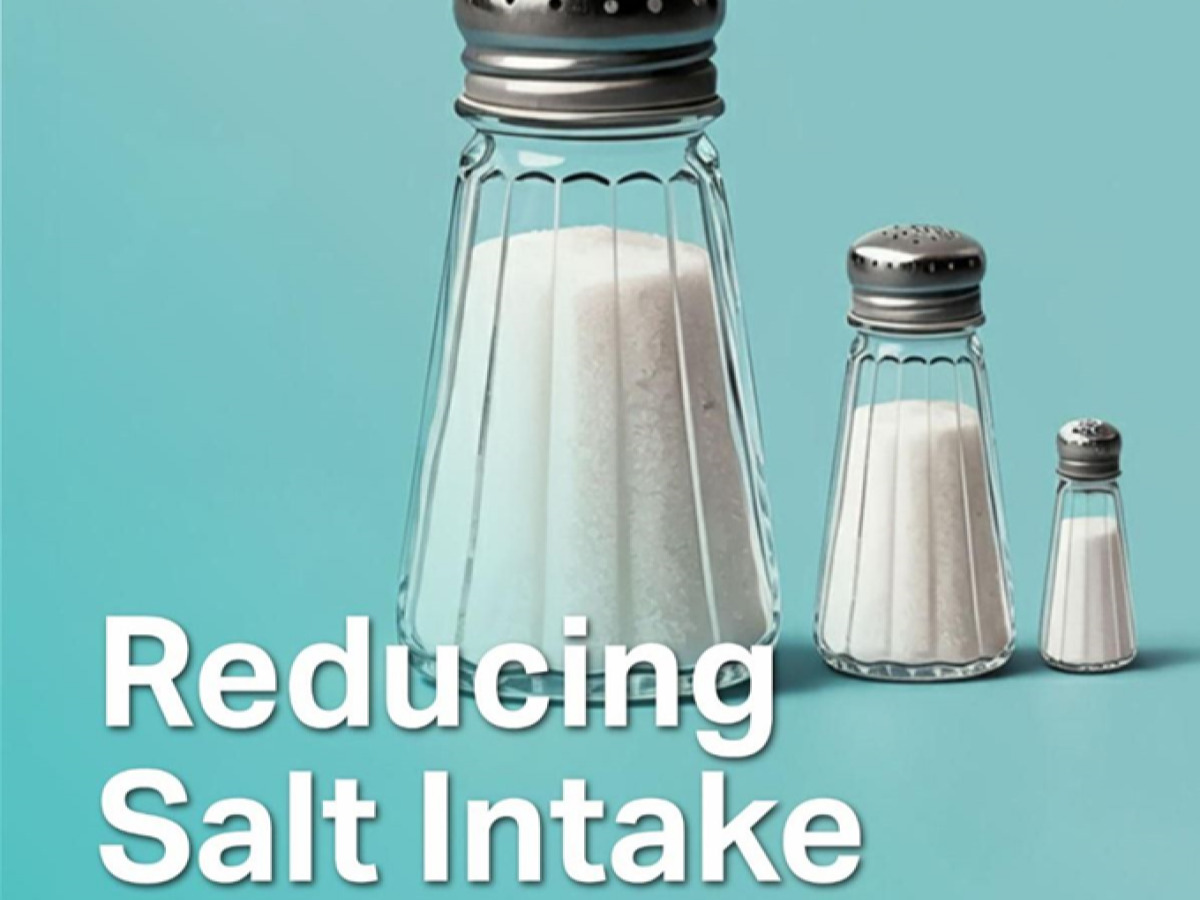Reducing Salt Intake
Institute of Child Nutrition (ICN)
November 6, 2024

Early childhood is a critical time for developing taste preferences. The food eaten by children during this time can influence their eating habits for many years. One challenge is the allure of salty flavors. However, too much sodium or salt intake can pose health risks. This Mealtime Memo from our partners at the Institute of Child Nutrition will demonstrate how to identify sodium in products and provide healthy food alternatives.
How Much Salt is Recommended?
The Dietary Guidelines for Americans (DGA) recommends the following limits for daily sodium intake:

To put sodium intake limits into perspective, 2,300 mg of sodium is equal to only 1 teaspoon of table salt! Therefore, it may not be surprising that, on average, sodium intakes in the United States are much higher than recommended—at about 3,400 mg/day—more than double the amount the DGA recommends for children under the age of 9.
Health Consequences of Too Much Salt
So, what does this mean? People with diets higher in salt may have an increased risk of developing high blood pressure. Uncontrolled high blood pressure can raise the risk of heart attacks, stroke, and kidney disease. These health concerns affect not only adults but children too! Consuming less sodium can help reduce the risk of developing these health conditions.
Sources of Sodium
You may think, “I don’t add salt to my food, so I should be okay, right?” Not necessarily. Table salt is one source of sodium; however, processed foods are also significant contributors of sodium because salt is commonly added to preserve foods and extend shelf life. According to the Centers for Disease Control and Prevention (CDC), almost half (48%) of the sodium in children’s diets comes from the following foods:
- Breads, rolls, and tortillas
- Burritos and tacos
- Cheese
- Deli/cured meats (luncheon/sandwich meat, ham, and sausage)
- Pizza
- Poultry (chicken patties, nuggets, and tenders)
- Sandwiches (hamburgers, hot dogs, and sub sandwiches)
- Snack foods (crackers, chips, pretzels/snack mix, and popcorn)
- Soup
- Canned vegetables with no added salt
Sodium is also found in these commonly eaten foods:
- Potato products (mashed potatoes, oven-baked fries, and tater tots)
- Ready-to-eat cereal
- Salad dressings (ranch, Italian, and French), mayonnaise, and soy/teriyaki sauce
- Tomato-based sauces and condiments (spaghetti sauce, marinara sauce, ketchup, and salsa)
Did you know a typical sandwich with two slices of bread, deli turkey, cheese, mustard, and lettuce can have over 1,500 mg of sodium? This is the daily limit of sodium intake for children under 8 years old! The ICN’s Grab and Go Lesson: Strategies for Reducing Sodium breaks this down and includes amounts of sodium in other commonly eaten foods
Identifying Sodium in Food Products
Understanding how to identify and manage sodium is vital. Here are some practical tips:
- Check Product Labels. Look at the front of the package for claims that may mean lower-sodium products such as “Sodium- or Salt-Free,” “Very Low or Low Sodium,” “Reduced-Sodium,” or “No Salt Added/Unsalted.”
- Read the Nutrition Facts Label. It specifies how much sodium is in the product. Compare similar products and choose the one with lower sodium. Remember to check the serving sizes.
Allergens
Some purchased seasoning packets not only have more salt, but also, added ingredients, such as additives, preservatives, and artificial colors, and may also contain allergens. Some individuals may be sensitive to certain ingredients and, in some cases, experience an allergic reaction. For example, a taco seasoning packet may contain allergens such as wheat, soy, and milk.
Nutrition Facts Labels
Let’s look at sample Nutrition Facts labels and Ingredients lists for a taco seasoning packet and a taco seasoning recipe to compare the amounts of sodium and the number of ingredients.

Let’s go through this comparison.
- Serving Size: Both list the same serving size, so a direct comparison can be made without the need to adjust the size. If the serving sizes are not the same, you will need to calculate an adjusted serving to compare the products.
- Sodium: The Taco Seasoning Packet has 14 times more sodium than the Taco Seasoning Recipe! (560 mg in the packet divided by 40 mg in the recipe.)
- Ingredients: The Taco Seasoning Packet has 16 ingredients compared to only 4 in the Taco Seasoning Recipe.
- Allergen Information: The Taco Seasoning Packet’s ingredients contain three major allergens (wheat, soy, and milk), preventing you from serving this product to children with wheat, soy, or milk allergies.
Are you surprised by the difference? Making taco seasoning from scratch has fewer ingredients, contains less sodium, and doesn’t take a long time to prepare. It’s an easy switch.
Tips for Reducing Salt
Reduce sodium content when making meals.
- Make scratch-prepared meals when possible, which allows you to control the ingredients and seasoning.
- Choose whole, fresh foods that are often naturally low in sodium. Include a variety of fruits, vegetables, lean proteins, and whole grains.
- Use as little salt in cooking as possible. You can cut at least half the salt from most recipes.
- Season foods with herbs, spices, salt-free seasonings, garlic, onions, peppers, and lemon or lime juice to add flavor.
Reduce sodium content when purchasing foods.
- Limit highly processed foods that tend to be higher in sodium.
- Compare product labels. Most canned foods (vegetables, soups, and sauces) have added salt.
- Choose foods labeled “Salt-Free,” “Low Sodium,” or “No Salt Added.”
- Drain and rinse canned vegetables in a colander to reduce the salt content.
- Select lower-sodium cheeses. Natural cheeses, such as Swiss, Monterey Jack, cheddar, and fresh mozzarella are lower in sodium than processed cheeses, such as American or string cheese. Cottage cheese is a healthy option but choose the “No Added Salt” version.
For more information read ICN’s November Mealtime Memo.
